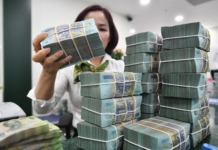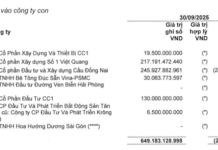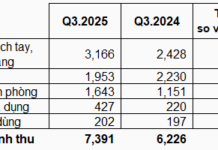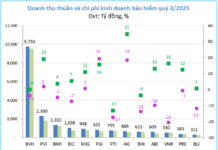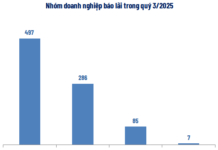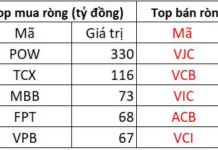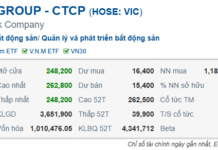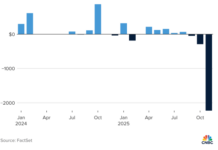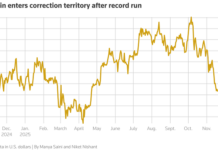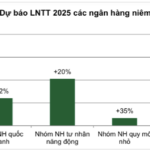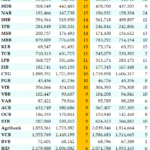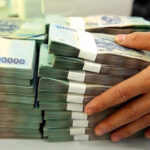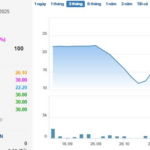Forecast credit surpasses target
According to the Vietcombank Securities Joint Stock Company (VCBS)’s report on the outlook for the last months of 2025, credit growth is expected to reach 18-20%, significantly higher than the 16% target set by the State Bank of Vietnam (SBV) at the beginning of the year. This indicates a strong recovery in capital demand in the economy. VCBS believes that the main driver for the credit acceleration is the prolonged low-interest rate environment, encouraging borrowing demand from businesses and individuals. Along with this, the legal unblocking for the real estate sector and the orientation to support the private sector are also creating more room for growth.
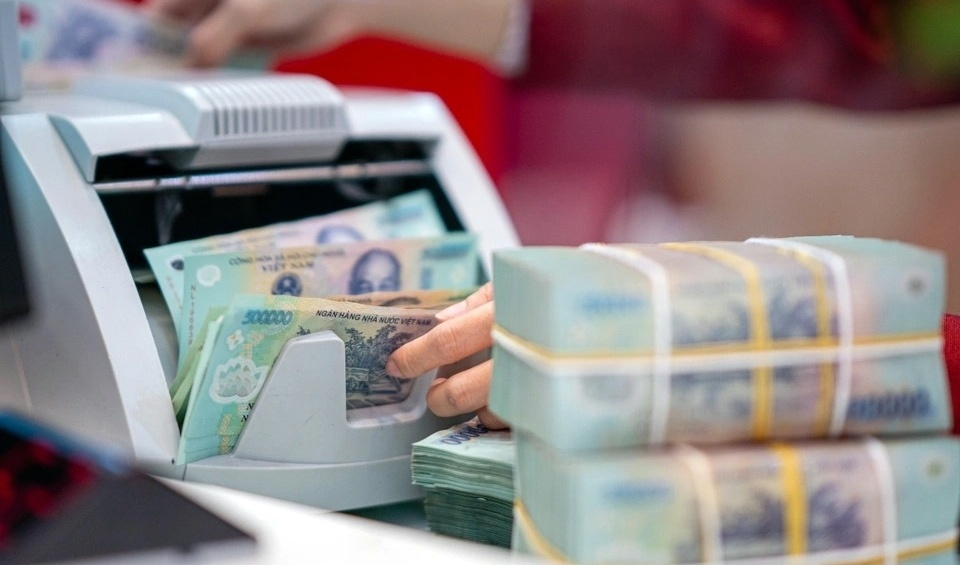
In the last months of 2025, credit is expected to accelerate strongly, even surpassing the full-year target set by the SBV.
Other securities companies such as SSI, Yuanta, and MBS share the same positive assessment. MBS forecasts that credit in the second half of the year could increase by an additional 17-18%, mainly due to the acceleration of public investment disbursement after a slow first half. “As of the end of June 2025, public investment disbursement reached only 29.6% of the full-year plan, equivalent to VND 268 trillion. Therefore, we expect the disbursement progress to accelerate in the remaining months of the year, becoming a key driver to achieve the 8% GDP growth target,” emphasized MBS expert.
Commenting on credit growth in the coming time, economist Dr. Le Xuan Nghia believes that the credit growth for the whole of 2025 could reach 19-20%, or even higher, as in the last months of the year, the growth rate will usually double that of the first half.
One of the important factors supporting credit is the SBV’s move to relax the credit room from July 2025, especially for banks with a healthy foundation or those participating in the handling and mandatory transfer of weak credit institutions. This provides the market with additional resources and expands access to capital.
In addition, Resolution 68 on private economic development also has a positive impact. The policy of exempting business license fees and corporate income tax for SMEs for the first three years, along with the orientation to encourage lending based on cash flow rather than collateral, has created more opportunities for small and medium-sized enterprises to access credit.
Notably, many commercial banks have also launched preferential loan packages to support businesses in time for the peak business season at the end of the year.
Along with the strong credit growth, the quality of assets in the banking industry is also showing positive signals. According to VCBS, the ratio of potential bad debt has decreased for four consecutive quarters, and restructured loans are returning to the standard group. This reduces the pressure on loan loss provisions, giving banks more room for new lending.
The Law Amending and Supplementing a Number of Articles of the Law on Credit Institutions, which took effect on October 15, 2025, is expected to create more favorable conditions for bad debt processing. Especially, the legalization of Resolution 42 on bad debt processing has resolved many problems, especially in handling secured assets. In parallel, Circular No. 14/2025/TT-NHNN changed the way risk ratios are calculated in lending, reducing the ratio for SME, agricultural, and social housing loans. This is an important step to encourage the flow of credit into priority areas.
Speed needs to be accompanied by quality
Strong credit growth is a positive signal for the economy. However, experts emphasize the need to ensure both quality and quantity in credit growth. Dr. Nguyen Duc Do, from the Academy of Finance, noted that if capital flows are not tightly controlled, money could flow into risky areas such as speculative real estate and securities, or even be influenced by cross-ownership. If capital flows in the wrong direction, credit growth will not bring sustainable value but also pose risks to the financial system.
Associate Professor Dr. Nguyen Huu Huan, from the University of Economics Ho Chi Minh City, also said that along with credit regulation, it is necessary to continue restructuring weak banks and promptly handle bad debts to consolidate the healthy development of the system.
In fact, the SBV has continuously issued directives requiring credit institutions to ensure that credit growth is safe and effective, prioritizing production and business fields. In a recent directive, SBV Deputy Governor Pham Thanh Ha emphasized that credit growth must ensure safety and efficiency, focusing on production and business fields, priority areas, and economic growth drivers; closely control credit in potential risk areas. There should be policies to prioritize credit sources for private enterprises, especially small and medium-sized enterprises, supporting industry enterprises, and innovative start-ups borrowing to invest in machinery, equipment, new technology, green transition, digital transformation, and export credit and supply chain credit.
In the context of Vietnam’s deep international integration and facing many fluctuations from external factors, ensuring that credit flows in the right direction and effectively managing risks will be the key to maintaining the stability of the banking system and supporting economic growth rapidly and sustainably.
Dr. Le Xuan Nghia recommended that it is important for banks to control the capital adequacy ratio (CAR) as this will be a measure to control credit growth, replacing the credit room. The average CAR of Vietnamese banks is currently maintained at about 12.3%, higher than the minimum of 8%, but still lower than the ASEAN-5 group and the average of the Asia-Pacific region (about 13.1%).
Mr. Nghia also evaluated that Circular No. 14/2025/TT-NHNN, which has just been issued, is a significant step towards Basel III, with the minimum CAR raised to 10.5% from 2030 (including the Conservation Buffer – CCB), along with additional requirements on the Countercyclical Capital Buffer (CcyB) and allowing the implementation of the Internal Ratings-Based (IRB) approach. Circular 14 paves the way for the application of the market credit mechanism, which is a necessary condition for the efficient and safe operation of Vietnam’s financial system in the context of deep international integration, but it is important to prevent fraud in the CAR.
|
According to data from the SBV, as of July 29, 2025, the credit of the whole system increased by 9.8% compared to the end of 2024, a positive growth compared to the same period in recent years. Along with that, the lending interest rate continues to show a downward trend. As of July 20, 2025, the average deposit interest rate for new transactions of commercial banks was at 4.18%/year, stable compared to the end of 2024; the average lending rate for new transactions was at 6.53%/year, a decrease of about 0.4%/year compared to the end of 2024. |
The Vietnamese Stock Market: On the Verge of a Golden Growth Cycle
The VN-Index is surging towards the 1,700-point mark, accompanied by record-high market liquidity, with many sessions reaching 70,000 to 80,000 billion VND. This remarkable performance reflects investors’ strong confidence and the allure of the stock market, especially in the context of low-interest rates and tightened speculative real estate investments.
“Eximbank Maintains B+ Rating with Stable Outlook from S&P Global Ratings”
The renowned international credit rating agency, S&P Global Ratings (S&P), has assigned a ‘B+’ long-term issuer credit rating with a stable outlook to the Vietnam Export Import Commercial Joint Stock Bank (Eximbank). This endorsement underscores Eximbank’s strengthened financial foundation, clear business strategy, and notable enhancements in asset quality, even amidst a volatile macroeconomic landscape.
What Do Rising Bank Bad Debts Tell Us?
The mounting bad debt in Vietnam’s banking sector, which has risen to a worrisome level of over VND 294,000 billion since the beginning of the year, poses a significant concern for the country’s economy. To address this issue, a multifaceted approach is necessary. This includes regulating and controlling credit in the economy, expediting the resolution of bad debts, and continuing the restructuring of weak banks to fortify and promote a robust and healthy banking system.









